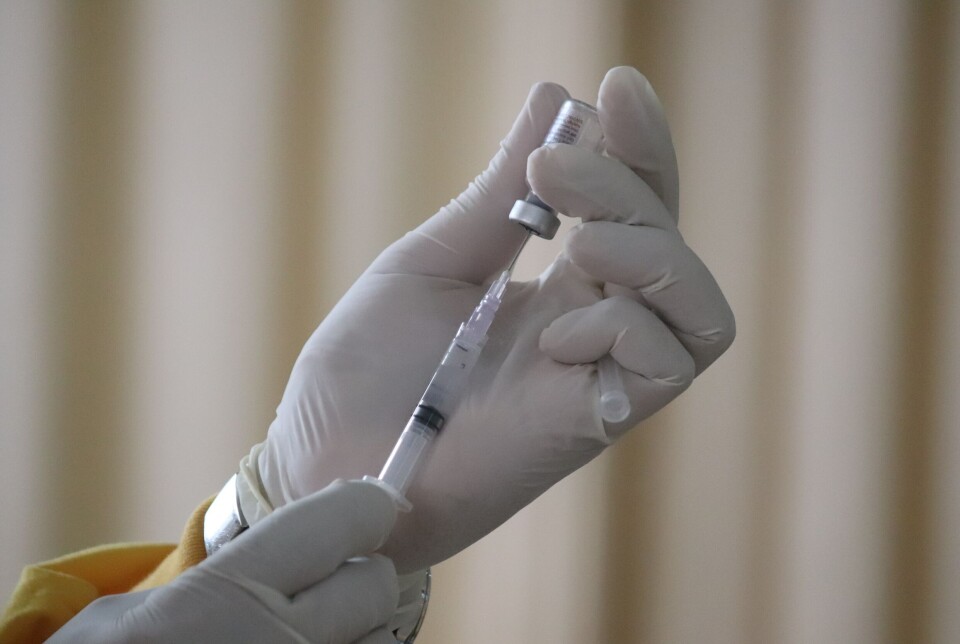THIS ARTICLE/PRESS RELEASE IS PAID FOR AND PRESENTED BY University of Oslo - read more

A new vaccine may provide better treatment for tuberculosis
A new vaccine against tuberculosis may also be used as treatment. The vaccine is safe to give to people with tuberculosis and strengthens the immune system's ability to attack the bacteria that cause the disease, a new study shows.
Tuberculosis is an infectious disease caused by the tubercle bacterium. The infection can occur in various organs in the body, such as in the lungs, in the brain, in the lymph nodes and in the skeleton. Tuberculosis is a major global public health problem. An estimated 10 million people fell ill with tuberculosis in 2020, and every year about 1.5 million people die from the disease, according to figures from the World Health Organization.
Today, tuberculosis is treated with antibiotics. The treatment is often long-lasting and not everyone recovers. Researchers at the Statens Serum Institute in Denmark have worked with the development of new vaccines against tuberculosis for many years.

A new study at Oslo University Hospital shows that the so-called H56: IC31 vaccine, developed in Denmark, also can be given to people who have already become ill. The vaccine can help the immune system to attack and fight the tuberculosis bacteria, and can be a relevant treatment option in addition to antibiotics.
“The most important finding in our study is that it is safe to give what we call a therapeutic vaccine, i.e. a vaccine used as treatment, to patients who have ongoing tuberculosis disease. The study also shows that the vaccine strengthens the part of the immune system that is to fight the tuberculosis bacteria,” says Anne Margarita Dyrhol-Riise, who led the study.
Dyrhol-Riise is Adjunct Professor at the Institute of Clinical Medicine and chief physician at the Department of Infectious Diseases at Oslo University Hospital Ullevål.
Patients who got the vaccine had more immune cells
The immune system plays a key role in the development of tuberculosis disease. Individuals who become sick have most often been infected with the tubercle bacterium at some point earlier in life. In areas with a lot of tuberculosis, people are often infected during childhood.
Nevertheless, most people do not fall ill but get a condition called latent tuberculosis. There is then a little remnant of the tuberculosis bacterium in the body.
“The immune system keeps the infection under control and the person appears to be completely healthy. However, later in life, some people’s immune system may be weakened by disease or because the person gets older. Then, the immune cells can no longer protect the body from the tubercle bacteria. It is only then that the person falls ill,” Dyrhol-Riise explains.
The researchers in Denmark had initially developed the vaccine to have a preventive effect, or that people infected with the tubercle bacterium would not become sick. Nevertheless, Dyrhol-Riise and the study team wanted to investigate whether it is possible to use the vaccine to treat tuberculosis when the person has already fallen ill. The findings from the new study indicate that this is the case. The study shows that the vaccine can help the immune system to attack and fight the tuberculosis bacteria in sick patients.
“We saw that the patients who received the vaccine had an increased number of immune cells, i.e. the T cells, which can fight the tuberculosis bacterium,” she says.
Hopes for higher recovery rates and shorter treatment time
Dyrhol-Riise says that the results from the study indicate that more patients with tuberculosis can be cured and/or recover faster if they get the vaccine in addition to antibiotics. This is especially true for patients who have developed multi-resistant tuberculosis, which means that the bacteria that cause tuberculosis have become resistant to several types of antibiotics.
The antibiotics that we have today are not effective enough to cure all individuals who have resistant tuberculosis.
“The aim of the project has been to show that a therapeutic vaccine should be included in a treatment regimen together with antibiotics for patients who have resistant tuberculosis,” she says.
She hopes that the vaccine will make it possible to cure more individuals and provide better treatment.
“It is conceivable that the vaccine, as part of the treatment in addition to antibiotics, may shorten the treatment time also for those patients who have not developed resistant tuberculosis,” Dyrhol-Riise points out, and adds:
“But we must study this further in larger groups of patients, including those with resistant tuberculosis bacteria, before we can finally conclude with such an effect.”
Fewer people receive treatment and more can become infected because of the COVID-19 pandemic
Tuberculosis is transmitted from one person to another through the respiratory tract from people who have tuberculosis infection in the lungs. It is important that those who fall ill receive prompt treatment, to have a greater chance of recovery and to avoid infecting others.
In recent decades, better diagnostic methods and a more systematic treatment approach have contributed to a decrease in the transmission of the tuberculosis bacterium worldwide. However, in some countries, the infection is increasing and the incidence of resistant tuberculosis is increasing in some regions. In addition, the pandemic has made the situation worse.
“Many people live with symptoms of tuberculosis disease for a long time before they contact the health service, and the pandemic has worsened this tendency. Shutting down society also makes it more difficult to provide adequate and long-term treatment to everyone who needs it,” Dyrhol-Riise explains, adding:
“Anything that can shorten and improve tuberculosis treatment will therefore be a strength.”
Need for more studies before the vaccine can be used in treatment
In this study, the primary objective was to find out if it is safe to give the vaccine as part of treatment for tuberculosis. Over 200 individuals with tuberculosis admitted primarily to Oslo University Hospital were assessed for the study over a 3-year period. Approximately 50 individuals were included in the study. These individuals received the vaccine twice and were followed-up closely with several controls for 238 days. All participants had a type of tuberculosis that can be cured with current antibiotic treatment.
“So all the patients who participated recovered as we expected. It was important for us to first show that the vaccine was safe even in case of illness and that it gave a favourable immune response. We, or other researchers, must take these findings further and conduct new studies,” Dyrhol-Riise concludes.
The present study builds on research conducted by researchers at the Statens Serum Institut in Denmark. Researchers at the Department of Infectious Diseases at the Institute of Clinical Medicine at UiO and at Oslo University Hospital Ullevål, with Anne Margarita Dyrhol-Riise, Kjetil Tasken and Dag Kvale, took the work further. The project was funded by the Research Council of Norway.
Reference:
Synne Jenum et.al.: Phase I/II randomized trial of H56:IC31 vaccination and adjunctive cyclooxygenase-2-inhibitor treatment in tuberculosis patients. Nat Commun 12, 2021.
———
Read the Norwegian version of this article at forskning.no
See more content from the University of Oslo:
-
Queer opera singers: “I was too feminine, too ‘gay.’ I heard that on opera stages in both Asia and Europe”
-
Putin’s dream of the perfect family
-
How international standards are transforming the world
-
A researcher has listened to 480 versions of Hitler's favourite music. This is what he found
-
Researcher: "AI weakens our judgement"
-
New, worrying trend among incels, according to researcher





































